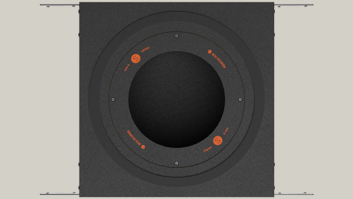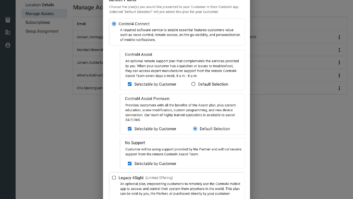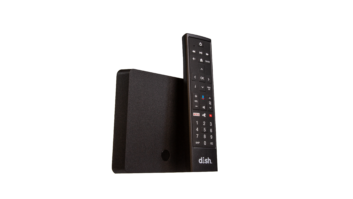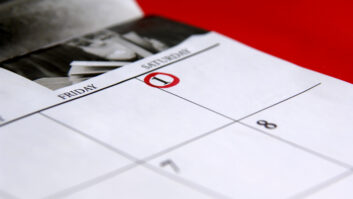There are always lessons that can be learned from any disaster. Things like making sure that the drawer full of flashlight and radio batteries isn’t filled with batteries that have long-since been dead. Or that the “emergency candles” were replaced after that maybe-not-such-an-emergency-in-retrospect romantic candlelit bathtub session…
But after the immediate danger from the disaster has passed and you have secured the most important things – the lives of yourself and your loved ones – and you get a chance to regroup and get your wits about you, the thing that you will probably be most concerned with is data.
Your house, your car, your furniture, your clothes, your *stuff*… all of it can be replaced. But your memories and documents are irretrievable. And for many people today those memories are stored as data; 0s and 1s on a hard drive somewhere, usually in a desktop or laptop computer.
Business data may be less sentimental but is certainly no less important. Your work computers likely have *thousands* of files covering years’ worth of customer records, billing, job history, inventory, outstanding payables and receivables. Without some of this information, your company may very well cease to exist.

Backing up your data is something that everyone plans on doing, but is the kind of thing that tends to get backburnered for one reason or other. Truthfully, I was no different. Even with minor scares like my old desktop’s power supply suddenly crapping out and then the hard drive making random clicking sounds and the fan blowing hard enough to generate a local category 3 windstorm — you know, the computer basically shooting up red flares telling me that trouble was a brewin’ and begging me to take some preventative action – I still managed to put it off.
My procrastinating came to a head one day when my computer totally locked-up. After installing some updates and running a virus scan, it was just a blank, black screen. Where not even the failsafe control-alt-delete worked. After a hard power down, the computer booted up into DOS and the monitor immediately began filling with screen after screen of code. This went on for several minutes until the desktop finally came on… but totally blank.
I was instantly overcome with that watery, full body cold sweat of I-narrowly-avoided-a-horrible-car-wreck feeling. Had I stumbled across some virus that wiped my drive clean just for giggles? Had I just lost my precious, irretrievable data? Every digital photo and video we’ve taken of Lauryn… My 9,500 song music collection… Ten years of articles I’ve written… Fifteen years of financial records… And every other scrap of data that makes up the unique 0s and 1s of what I hold dear…
Fortunately, the desktop eventually returned to normal and my data was safely intact, but in those few moments, when I thought that I had quite possibly lost everything, I would have paid handsomely to just see the “My Pictures” folder again. And the experience was enough to cause me to become a true believer; I immediately ordered a hard drive that is now a small data “vault” that can be easily evacuated in the case of emergency. (I live in hurricane prone Myrtle Beach.)
But even that might not be enough. Consider the plight Home Theater Magazine audio/video editor-at-large, absinthe-aficionado, rogue and all-around Sciacca persecutor, The Darryl Wilkinson. Earlier this year The Darryl was traveling, and like a well prepared, tech journalist he had his laptop with him. As a data conscientious individual, he also had his portable drive with him, to ensure that he backed-up all of his data while on the road. It was the perfect solution. Except someone broke into his car. And stole it all. Of course, in hindsight I’m sure that Darryl sees the problem with keeping primary and back-up data sources together – kind of like how the president and VP don’t fly together — but none of us really expects to get robbed. (Though Darryl did find out the next day that 29 cars had been broken into the night before in the same area, so the moral of the story is, don’t bring anything you love with you to the Arts District in St. Louis. Apparently Obi-Wan was wrong; there is a more wretched hive of scum and villainy…)
But that’s the thing about disasters; they usually come without warning, when you aren’t expecting them and don’t give you a chance to prepare and get all your ducks in-a-row. And that’s why doing a bit of prep is so vital.
But we often have a cavalier, “Oh, it will never happen to me. That’s a problem for someone else!” mentality when it comes to these things. And it isn’t until you experience one of those, “HOLY CRAP! WHAT JUST HAPPENED?!? OH GOD, WHY?! WHY?!?!?!” moments that you really take it seriously.
One of the best demonstrations of this “I will make you feel the pain of which I speak!” that I’ve experienced was at CES this past year. The company ioSafe gathered journalists together to witness “the Cage of Death” where they would zap one of the company’s virtually indestructible hard drives with a million volts of electricity over and over and over. Prior to the demonstration they asked all of the journalists to place anything electronic that could be susceptible to damage from the voltage in a Faraday cage that would keep it protected. So we all dutifully packed the cage with our laptops and cell phones and any other items we wanted to insure the safety of.
When the demonstration was over, Robb Moore, ioSafe’s CEO — who was giving the demo — walked out, stumbled on some cabling and tripped, knocking the cage holding all of our gear into a giant tub filled with water.
Where it sat. Completely submerged.
And we all just stood there. Totally stunned. Looking at each other. Wondering W…T…F?!?!
I had 4 days’ worth of CES coverage on that computer. None of it backed up anywhere.
Robb milked the tension for a few minutes and then showed us the actual case holding all of our gear, safe and dry behind a table. Then he asked, “How is everyone feeling right now? Thinking you just lost everything? And then finding out that all of your data is really safe.”
Spend a few seconds and consider what you’d lose if your computer suddenly suffered a grand mal seizure. Or was sitting under a foot of water. Or was stolen. Or was burnt. Or was… Sobering, no?
The pitch was that you wouldn’t have had to worry if your data had been backed up to one of ioSafe’s ultra-rugged, ready for whatever mother-nature can dish out, drives that can withstand crushes up to 5,000 pounds, drops from 20 feet, immersion in up to 30-feet of fresh or saltwater for days, dust and sand resistant, fireproof (1550°F for 30 minutes) and even immersion in diesel fuel, oil, hydraulic or aircraft fuel up to 12-feet for an hour. They describe it like an “aircraft black box for mobile data.” (I’m dying to get my hands on a model for review to run it through some awesome tests! You hear me, Robb! I want a review sample!) And if all else fails, ioSafe offers $5,000 of forensic data recovery to retrieve your precious. Sure, it might just be a video of your child’s first step, but as a parent, I can tell you that when you think you’ve *lost* that video, it is worth every bit of $5,000.
As Wilkinson’s example showed, the best back-up plan can still be foiled if the back-up device is stolen or destroyed. (You know, along with the primary device.) Another way to safely and easily store your data is in the Cloud. I’ve recently started using a free web service called SugarSync. This service gives you a free 5 Gigs of free back up that can be spread across a couple of computers. (You can pay to have a larger data plan if you wanted to sync all of your music and photos and whatevers.) It’s easy to add folders that you want to keep synched and then the service automatically backs them up to the cloud where they are safe and secure and out of harm’s way. What I like about this method is that it takes the user – me – out of the equation. I don’t have to remember to connect my computer to the drive and initiate a sync; it happens automatically and instantly so that any new data is protected in real-time. I’ve used SugarSync to sync all of my installation company’s client records, invoices, estimates, correspondence, tax records and other material that would be irreplaceable in the event of a disaster. As an added bonus, because it’s in the cloud, I can now easily access this information from my iPhone, iPad or any other computer. Granted, there are tons of other services like SugarSync – DropBox, Carbonite, JustCloud, Mozy, iCloud — so find one that you like and that works for you and use it!
Whether you use a large external drive, Network Attached Storage (NAS), a bunch of USB thumb drives, remote Cloud storage, routinely burn everything onto a DVD (or Blu-ray), or some combination of all, make sure you’ve got a back-up plan in place and stick to it! The time to prepare for a disaster is *before* it happens.
John Sciacca is principal of Custom Theater and Audio in Myrtle Beach, SC.







